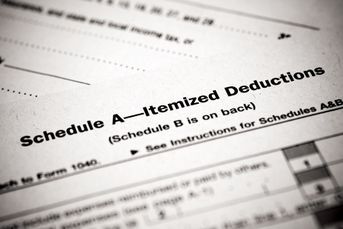Don’t confuse old tax rules with new ones when selling a home

While last year's overhaul didn't change tax rules on the sale of a residence, some clients still try to apply rules that have been out of date since the late '90s.
When the first versions of the Tax Cuts & Jobs Act were released last year, Congress looked to rework the rules on the sale of a personal residence. By the time the bill was finalized, however, all those proposed changes were eliminated.
So with no changes to the rules this year, homeowners and their advisers should be up to speed on the tax treatment when a home is sold, right?
Not exactly.
The last time there was a significant change to the rules when selling a personal residence was in 1997, and it resulted in a complete redo of how home sales are treated. But while many taxpayers are aware of some of those “new” rules, it’s not uncommon for home sellers to try and apply the pre-1997 rules as well.
(More: Alternative minimum tax a casualty of tax reform nobody will miss)
Exclusion of Gain on Residence
Under the prior rules, a taxpayer could defer the gain on the sale of their primary residence by rolling the sales proceeds into a new home. If those proceeds weren’t rolled over, the gain was taxable, although there was also a one-time, $125,000 gain exclusion available to homeowners over age 55.
In 1997, President Bill Clinton signed the Taxpayer Relief Act, a bill that’s mostly remembered as the origin of the Roth IRA. However, it also includes the law we have now that allows taxpayers to exclude the first $250,000 of gain on the sale of a primary residence from taxable income ($500,000 for married couples filing jointly).
If the gain on the sale is larger than the exclusion amount, the excess is a taxable capital gain. Losses, however, are not deductible.
That’s it. No requirement to roll over the proceeds. No bonus exclusion for older homeowners.
The only other requirement is that the home has to be owned and used as a primary residence for two of the last five years before the sale — but homeowners can also claim this same exclusion once every two years, meaning gains on multiple homes can be sheltered over enough years.
So gains below the threshold are completely tax-exempt, but that means any gain above the threshold is then taxable. Fortunately, that gain is taxed like any other capital gain (meaning a top tax rate of 20%), and it can be offset by capital losses, such as those from the sale of stock or other investments.
(More: All is not lost when it comes to the mortgage interest deduction)
Other Considerations
One of the issues home sellers run into is not meeting the two-year ownership and use requirements. In those cases, the taxpayer can qualify for a partial exclusion as long as the sale was the result of employment or health issues, or other “unforeseen circumstances.”
In those cases, a prorated portion of the exclusion is available, based on how much of the two-year requirement was met. Because this proration means that at least some exclusion is still available, the seller may still be able to exclude their entire gain.
In cases where a single homeowner marries, the joint exclusion of $500,000 is only available once both spouses have lived in the home for two years. The home only needs to be owned by one spouse, but both must have lived there or else the maximum exclusion is limited to the $250,000 amount for singles.
If a married couple meets the two-year requirement, but then one spouse dies, the survivor has two years to sell the home and still qualify for the full $500,000 exclusion. After that, the lower $250,000 exclusion applies.
When it comes to the basic tax rules for the sale of residence, they’re really pretty simple. It’s only when a home seller tries to combine rules they’ve heard about that it gets complicated, and that’s when an informed adviser can add a lot of value.
(More: Tax reform: 7 essential strategies for financial advisers)
Tim Steffen is director of advanced planning at Baird. Follow him on Twitter @TimSteffenCPA.
Learn more about reprints and licensing for this article.








